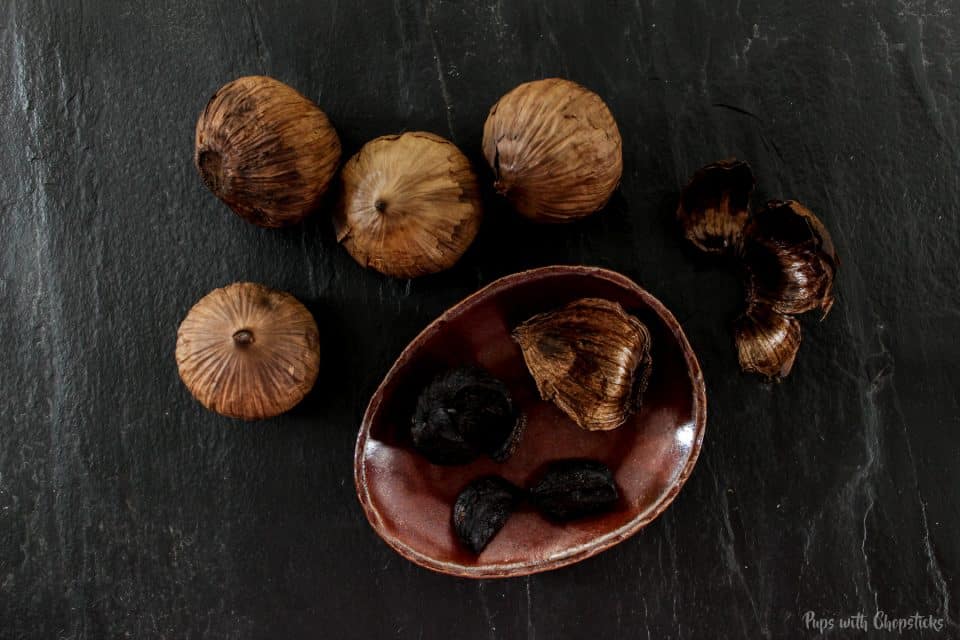Black garlic is beloved for its sweet, molasses-like flavor and soft texture—but not every clove emerges from the aging process in perfect condition. Misshapen cloves or those with minor visual flaws can pile up, leaving producers and home cooks alike wondering how to make the most of them. At the same time, byproducts like skins or garlic “juice” can seem destined for the trash. In the spirit of reducing food waste and honoring the full potential of this prized ingredient, here are some innovative ways to repurpose imperfect black garlic cloves and related scraps.
1. Embracing Imperfect Black Garlic Cloves
a) Chopped and Minced Toppings
-
Why It Works: Appearance matters less when the cloves are chopped or minced, so blemishes become irrelevant.
-
How to Use:
-
Sprinkle over salads, pasta, or pizza for an umami kick.
-
Fold into mashed potatoes, dips, or guacamole for extra depth.
-
Add to scrambled eggs or omelets.
-
b) Purées and Pastes
-
Why It Works: A blender doesn’t care about shape.
-
How to Use:
-
Mix imperfect cloves with olive oil, salt, and maybe a hint of vinegar to create a spreadable paste for sandwiches or bruschetta.
-
Enhance homemade sauces and dressings. A touch of black garlic paste transforms a basic vinaigrette into a gourmet drizzle.
-
c) Infused Oils and Butters
-
Why It Works: Sourcing a handful of visually flawed cloves can create potent flavor infusions.
-
How to Use:
-
Oil Infusion: Submerge chopped or crushed black garlic in a neutral oil (like grapeseed) or olive oil for a few days. Drizzle the resulting infusion on roasted veggies or bread.
-
Compound Butter: Mash imperfect cloves with softened butter, fresh herbs, and a pinch of salt. Ideal for topping steaks, grilled vegetables, or warm bread.
-
2. Reusing Black Garlic Skins and Scraps
a) Flavor-Packed Stock and Broth
-
Skins and Scraps: Clove skins, stray bits of garlic, and even the paper-like layers around the bulb can all lend flavor.
-
Method:
-
Collect the scraps in a sealed container or bag in the freezer.
-
Add them to your next homemade vegetable, chicken, or beef stock.
-
Simmer for depth—black garlic’s sweetness and mellow tang add a subtle umami note.
-
b) Homemade Seasoning Dust
-
Process:
-
Dehydrate or oven-dry leftover skins at a low temperature (50–60°C / 120–140°F) until brittle.
-
Grind in a mortar and pestle or spice grinder to form a coarse seasoning dust.
-
-
Use:
-
Sprinkle over popcorn, roasted nuts, or fries for a gourmet touch.
-
Add to salt or seasoning blends for a flavor boost in rubs and marinades.
-
3. “Garlic Juice” or Liquid Byproducts
a) Collecting the Liquid
During black garlic aging, some producers notice exuded liquid—the result of condensation and natural garlic juices that release as the cloves transform. While not always abundant, this liquid can contain concentrated flavors.
b) Cooking and Marinating
-
Marinades: Whisk a spoonful of black garlic “juice” into soy sauce, vinegar, or citrus juice to marinate meat or tofu.
-
Glazes: Reduce the liquid in a small saucepan with a touch of sweetener (like honey) to form a sticky glaze for proteins or roasted vegetables.
c) Add to Soups and Sauces
In small amounts, black garlic juice can enhance broth-based soups, stews, or pan sauces—bringing a richer, deeper dimension without needing whole cloves.
4. Beyond the Kitchen: Unexpected Applications
a) Compost and Garden Uses
-
Skins and Minimal Garlic Remnants can break down in compost, adding nitrogen and other nutrients to the soil. Just be mindful not to overdo it, as large amounts of garlic waste can affect soil pH.
b) Scented Crafts
Though not common, some creative crafters have experimented with adding dried black garlic skins or byproducts into potpourri or scented sachets—appreciating the subtle, sweet, and earthy aroma. This is highly subjective, but for those who adore black garlic’s fragrance, it can be a fun side project.
5. Tips for Safe and Tasty Repurposing
-
Check for Spoilage: Even imperfect cloves should still be fresh-smelling (black garlic’s sweet-savory scent) and free of mold. When in doubt, discard it.
-
Handle With Care: Black garlic is sticky—keep surfaces and knives well-oiled or damp to prevent residue buildup.
-
Label and Store: Store leftover scraps in an airtight container in the refrigerator or freezer. Skins stored for stock-making should be frozen if you won’t use them soon.
-
Experiment Cautiously: Start with small amounts, especially when adding scraps or juices to sauces—black garlic’s flavor can be intense.
6. Inspiring Zero-Waste Recipes
-
Black Garlic “Everything” Butter
-
Combine mashed imperfect cloves, black garlic seasoning dust (from dried skins), a pinch of salt, and chopped fresh herbs. Spread on bagels, toast, or grilled corn.
-
-
Savory Popcorn
-
Drizzle popcorn with black garlic–infused oil, then dust with ground skins or scraps. Finish with a sprinkle of Parmesan or nutritional yeast.
-
-
Umami Roasted Nuts
-
Toss walnuts or almonds with black garlic paste, a splash of soy sauce, and a dash of chili flakes. Roast for a sweet-spicy-savory snack.
-
Final Thoughts
Black garlic is a precious ingredient—one that resonates with intense flavor and a distinctive culinary identity. Learning how to use every part of it—not just the picture-perfect cloves—reinforces a zero-waste mindset and showcases the ingredient’s versatility. From byproducts that become flavor bombs in stock to imperfect cloves reborn as savory spreads, there’s no shortage of ways to honor black garlic’s magic.
The next time you encounter a misshapen clove or leftover skins, consider them an opportunity for creativity rather than a burden. By embracing the entire black garlic experience, you’ll not only reduce food waste but also elevate the flavors in your kitchen—proving that sometimes, imperfection can lead to the most innovative and delicious results.

Comments (0)
No comments yet. Be the first to comment!